Osiris: Enigmatic And Powerful God In Ancient Egypt
A. Sutherland - AncientPages.com - Unquestionably, Osiris was one of the most important deities in ancient Egypt. Osiris was a god of death, resurrection, and fertility. His origin and the meaning of his name remain enigmatic. Also, the direct association of Osiris with agriculture and fertility is believed to have occurred later.
Facsimile of a vignette from the Book of the Dead of Ani. The deceased Ani kneels before Osiris, judge of the dead. Behind Osiris stand his sisters Isis and Nephthys, and in front of him is a lotus on which stand the four sons of Horus. Published by James Wasserman; facsimile made by E. A. Wallis Budge; original artist unknown. Public Domain
According to the “Pyramid Texts”, Osiris was one of the three most important and frequently mentioned deities, along with Horus and Re.
There are many versions of Osiris’ myth. Our main authority for the legend of Osiris is Plutarch of Chaeronea who was the most influential ancient philosopher and his work "De Iside et Osiride" (“Concerning Isis and Osiris”). However, the whole story is not to be found in Egyptian texts, though these confirm the accounts given by the Greek writers.
Osiris' "symbols were crook and flail, djed, bull, throne, and phoenix. Nut and Geb gave birth to Osiris first. Then he became a brother to Isis, Seth, and Nephthys. Osiris chose to be married to his sibling, Isis. He went on to father Anubis and Horus. Some stories insinuate that Nephthys (mother of Anubis) took the form of Isis to seduce Osiris. Later, she became pregnant with Anubis. 1
In Plutarch's story of Osiris and Isis, it is claimed that Osiris, once ruled Egypt until he was murdered by his jealous brother Seth who wanted Osiris‘ throne. The body of Osiris was dismembered and scattered across the land but Isis and her sister Nephthys (also Seth’s wife) found Osiris.
The gods Osiris, Anubis, and Horus. Wall painting in the tomb of Horemheb (KV57). Image credit: A. Parrot - CC BY 2.0
Isis briefly brought Osiris back to life for a short period of time, so he could help her to be pregnant. Thus Horus, Osiris’ son, and rightful heir was born. Osiris became the god of the underworld.
Osiris and other gods
Osiris was associated with the god Andjety of Busiris, an earthly ruler who was resurrected, and interestingly, his insignia were the same as those used by Osiris. He also took the title"foremost of the westerners" from the ancient jackal god Khenty-imentiu of Abydos and from Anubis, he took the title "he who is the god's tent". Osiris was also identified with Soker, an ancient Memphite god of the dead.
The “ba” (or soul) of Osiris was believed to reside in the sacred ram Ba-neb-djedet, an ancient Egyptian god of Lower Egypt worshiped at Mendes and the Apis bull, (usually associated with god Ptah) was later a manifestation of Osiris and so it continued.
The god Osiris became a more and more important figure in the Egyptian pantheon. Various titles, which were applied to him, largely contributed to his greatness. He became almost as powerful as that of god Ra. Ra was lord of heavens and Osiris was lord of the underworld. Gradually the cult of Osiris spread throughout Egypt and the god’s personality assimilated other deities and their attributes. His main cult center was in Abydos and Heliopolis.
When Ptolemy I Soter, a Macedonian general of Alexander the Great became ruler of Egypt (323–285 BC) and founder of the Ptolemaic dynasty, he introduced the hybrid, Serapis. Clement of Alexandria, (c. 150 – c. 215), a Christian theologian who taught at the Catechetical School of Alexandria believed that Serapis was a combination of Osiris and Apis, the bull god that was worshiped in Memphis. The cult of Osiris/Apis was very popular among the Macedonians, who at Ptolemy’s direction had renamed it – Serapis.
Worship and view of Osiris; the Chapel of Osiris at Abydos Temple. Image credit: Amice M.Calverley, Alan Gardiner - CC BY-SA 3.0
Osiris was usually depicted in form of a human mummy with white skin that probably symbolizes the mummy wrappings. Another depiction portrays the god with black skin as the color of the deities of the underworld. Osiris was sometimes depicted wearing other crowns having complex forms, but the White crown of Upper Egypt or the Atef crown (the white crown with ostrich feathers on each side and a disc at the top) are most frequently seen.
His hands are crossed on his breast, one hand holding a flail, and the other, crook. Both are Osiris’ chief attributes. Other decorations of his body are bracelets worn at the wrist and a broad collar.
The Cult of Osiris grew by its own power and remained powerful throughout most of Egyptian history. It also spread beyond the borders of Egypt. The Greeks associated Osiris with their own god Dionysos.
Written by – A. Sutherland - AncientPages.com Senior Staff Writer
Copyright © AncientPages.com All rights reserved. This material may not be published, broadcast, rewritten or redistributed in whole or part without the express written permission of AncientPages.com
Expand for referencesReferences:
Roger Lancelyn Green, Tales of Ancient Egypt
Pollitt J. J. Art in the Hellenistic Age
Saunders N. J. Alexander's Tomb: The Two-Thousand Year Obsession to Find the Lost Conquerer
More From Ancient Pages
-
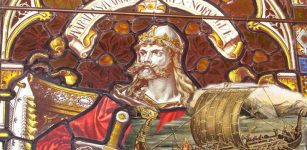 On This Day In History: The Battle Of Fulford Was Fought – On Sep 20, 1066 AD
News | Sep 20, 2015
On This Day In History: The Battle Of Fulford Was Fought – On Sep 20, 1066 AD
News | Sep 20, 2015 -
 Legend Of The Blue Men Of Minch: Were They Mythological Creatures Or Real Men?
Featured Stories | May 13, 2016
Legend Of The Blue Men Of Minch: Were They Mythological Creatures Or Real Men?
Featured Stories | May 13, 2016 -
 ‘Throughout All Days And Nights, Forever’: Could An 11th-Century Contract Show Same-Sex Marriage In Medieval Spain?
Featured Stories | Aug 23, 2024
‘Throughout All Days And Nights, Forever’: Could An 11th-Century Contract Show Same-Sex Marriage In Medieval Spain?
Featured Stories | Aug 23, 2024 -
 Controversial Hollow Earth Theory – Questions And Answers – Part 3
Ancient Mysteries | Jun 28, 2019
Controversial Hollow Earth Theory – Questions And Answers – Part 3
Ancient Mysteries | Jun 28, 2019 -
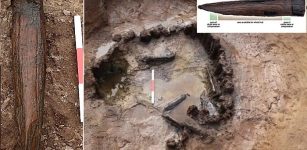 ‘Exceptionally’ Rare Iron Age Axle Found In Suffolk
Archaeology | Jan 26, 2023
‘Exceptionally’ Rare Iron Age Axle Found In Suffolk
Archaeology | Jan 26, 2023 -
 On This Day In History: HMS Challenger Begins Scientific Exploration Of Oceans – On Dec 21, 1872
News | Dec 21, 2016
On This Day In History: HMS Challenger Begins Scientific Exploration Of Oceans – On Dec 21, 1872
News | Dec 21, 2016 -
 Unusual Ancient Human Bones Found In A Grave In Derbyshire – Burial Place Of A Legendary Person?
Featured Stories | Apr 24, 2024
Unusual Ancient Human Bones Found In A Grave In Derbyshire – Burial Place Of A Legendary Person?
Featured Stories | Apr 24, 2024 -
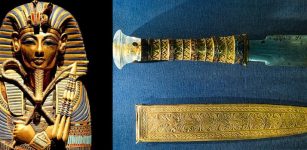 Tutankhamun Had An Ancient Dagger From Outer Space
Archaeology | Jun 1, 2016
Tutankhamun Had An Ancient Dagger From Outer Space
Archaeology | Jun 1, 2016 -
 Meteora – A Sanctuary Of Harmony And Quietness “Hanging” In The Sky
Civilizations | Aug 14, 2015
Meteora – A Sanctuary Of Harmony And Quietness “Hanging” In The Sky
Civilizations | Aug 14, 2015 -
 Prince John’s Plot Against King Richard The Lionheart
Featured Stories | Nov 20, 2018
Prince John’s Plot Against King Richard The Lionheart
Featured Stories | Nov 20, 2018 -
 Yokai (Yōkai): Mysterious Interdimensional Force With Odd Abilities In Japanese Mythology
Featured Stories | May 15, 2017
Yokai (Yōkai): Mysterious Interdimensional Force With Odd Abilities In Japanese Mythology
Featured Stories | May 15, 2017 -
 On This Day In History: Simon Fraser – The Last Man In Britain To Be Executed On Tower Green, London – On Apr 9, 1747
News | Apr 9, 2017
On This Day In History: Simon Fraser – The Last Man In Britain To Be Executed On Tower Green, London – On Apr 9, 1747
News | Apr 9, 2017 -
 New Study: Middle Neolithic Circular Enclosure Of Goseck – Sacred Place And Astronomical Observatory
Archaeology | Aug 9, 2023
New Study: Middle Neolithic Circular Enclosure Of Goseck – Sacred Place And Astronomical Observatory
Archaeology | Aug 9, 2023 -
 Windover Pond – Remarkable 8,000-Year-Old Underwater Cemetery In North America
Archaeology | Dec 28, 2014
Windover Pond – Remarkable 8,000-Year-Old Underwater Cemetery In North America
Archaeology | Dec 28, 2014 -
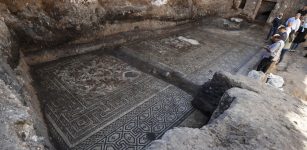 Rare Roman Mosaic Of Amazon Warriors Unearthed In Syria Hailed As Major Archaeological Discovery
Archaeology | Oct 12, 2022
Rare Roman Mosaic Of Amazon Warriors Unearthed In Syria Hailed As Major Archaeological Discovery
Archaeology | Oct 12, 2022 -
 How Did A Piece Of An ‘Epic’ Viking Sword End Up In The Netherlands?
Vikings | Dec 4, 2024
How Did A Piece Of An ‘Epic’ Viking Sword End Up In The Netherlands?
Vikings | Dec 4, 2024 -
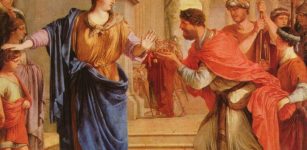 Ars Amatoria – Ancient Roman Flirting Tips – Could They Still Work?
Featured Stories | Mar 26, 2019
Ars Amatoria – Ancient Roman Flirting Tips – Could They Still Work?
Featured Stories | Mar 26, 2019 -
 Declining Fertility Rates May Explain Neanderthal Extinction
Archaeology | Jun 3, 2019
Declining Fertility Rates May Explain Neanderthal Extinction
Archaeology | Jun 3, 2019 -
 Ask And Embla: First Human Pair Created By Powerful God Odin And His Two Brothers
Featured Stories | Sep 24, 2016
Ask And Embla: First Human Pair Created By Powerful God Odin And His Two Brothers
Featured Stories | Sep 24, 2016 -
 Draken Harald Hårfagre – World’s Largest Viking Ship On Its Way To U.S And Canada
News | Apr 27, 2016
Draken Harald Hårfagre – World’s Largest Viking Ship On Its Way To U.S And Canada
News | Apr 27, 2016



